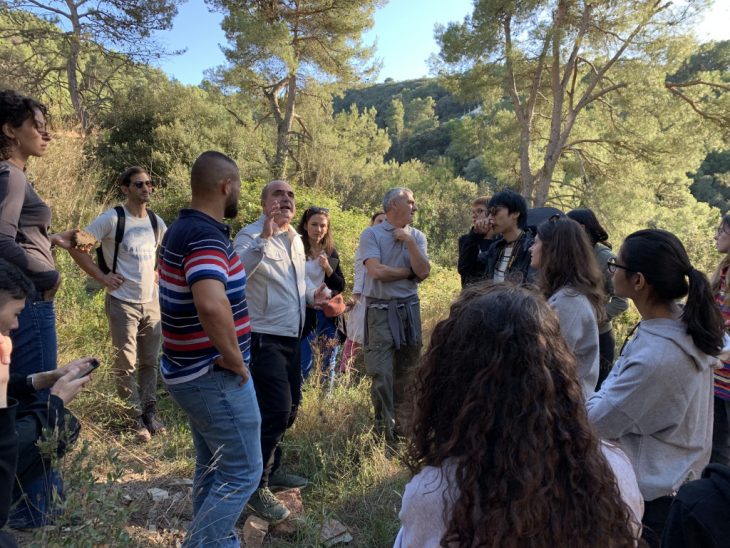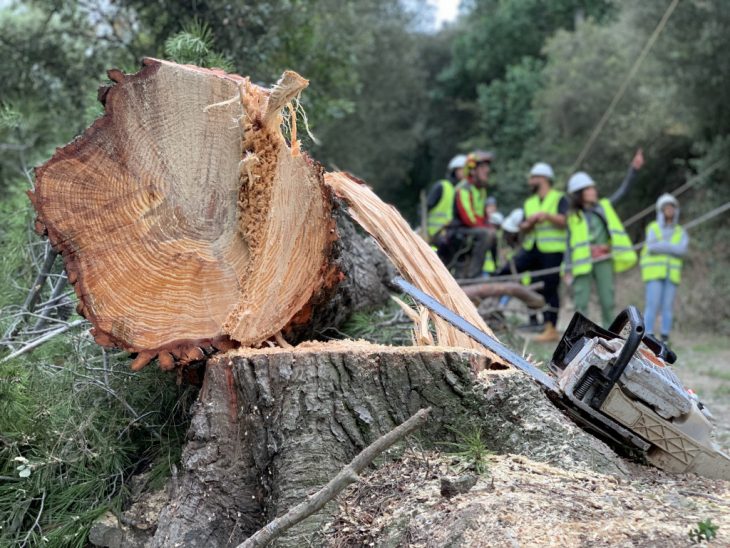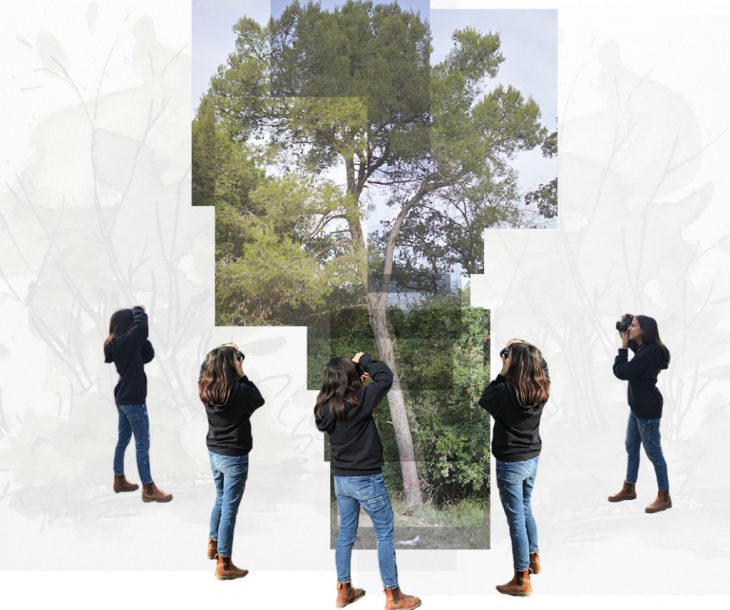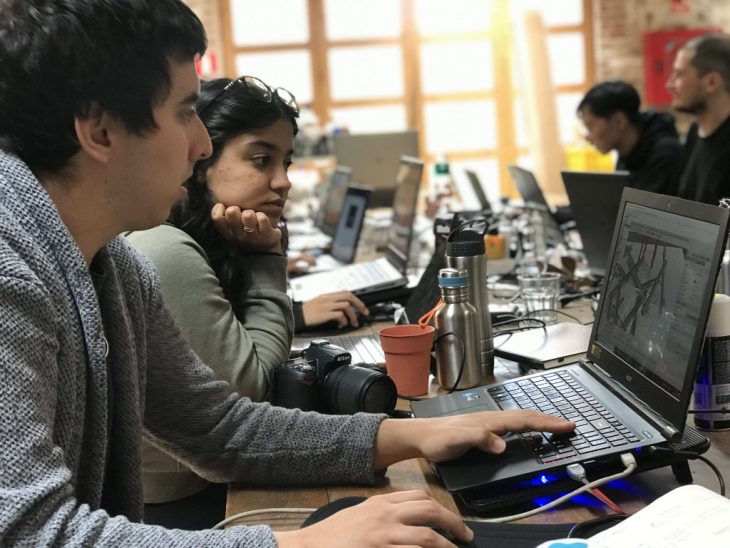An intrinsic element to ecologically conscious design is the consideration of how and where construction materials are sourced from. This year, as part of a full traceability and zero km materials initiative at Valldaura Labs, MAEBB students launched a timber sourcing and tracing effort that will progress throughout the academic year and culminate in the application of the wood for the construction of the 2020 Prototype Ecohouse.  To create a valuable narrative to celebrate and underline this process, students were tasked to each select a single tree from the Valldaura Forest which fit the criteria of 1. Contributing to the health and maintenance of the forest and 2. Provide sufficient and suitable material towards production of construction materials to be used in the 2020 Prototype Ecohouse. The tree selected by each student is then referred to as ‘their tree’.
To create a valuable narrative to celebrate and underline this process, students were tasked to each select a single tree from the Valldaura Forest which fit the criteria of 1. Contributing to the health and maintenance of the forest and 2. Provide sufficient and suitable material towards production of construction materials to be used in the 2020 Prototype Ecohouse. The tree selected by each student is then referred to as ‘their tree’.  This autumn, students began this process by identifying optimal trees with advice from forest and tree expert Gerard Passola, followed by precise documentation of each tree including a system of photogrammetric scanning, in order to have a 3D reconstruction of the trees for further analysis and processing.
This autumn, students began this process by identifying optimal trees with advice from forest and tree expert Gerard Passola, followed by precise documentation of each tree including a system of photogrammetric scanning, in order to have a 3D reconstruction of the trees for further analysis and processing.  To facilitate this, MAEBB students received direction from Soroush Gharivani, a junior faculty member of the Master of Robotics in Advanced Construction at IAAC, to learn strategies of scanning and digital documentation of the trees. Soroush guided students in the process of photogrammetry, as well as learning the software needed to digitally reconstruct the scanned trees to be used for modeling and analytic processes.
To facilitate this, MAEBB students received direction from Soroush Gharivani, a junior faculty member of the Master of Robotics in Advanced Construction at IAAC, to learn strategies of scanning and digital documentation of the trees. Soroush guided students in the process of photogrammetry, as well as learning the software needed to digitally reconstruct the scanned trees to be used for modeling and analytic processes.
 From this point onward, students will follow all actions taken on their designated tree, from felling to transportation, to material production and the eventual use of the produced materials during the construction of the Ecohouse. Students will use the scanned and digitally reconstructed trees with the purpose of embedding intelligence and reducing human error in the design process for the Prototype Ecohouse. This year, MAEBB students are further charged with a design that is optimized towards precise use of materials produced from their designated trees, rather than using any commercially available materials.
From this point onward, students will follow all actions taken on their designated tree, from felling to transportation, to material production and the eventual use of the produced materials during the construction of the Ecohouse. Students will use the scanned and digitally reconstructed trees with the purpose of embedding intelligence and reducing human error in the design process for the Prototype Ecohouse. This year, MAEBB students are further charged with a design that is optimized towards precise use of materials produced from their designated trees, rather than using any commercially available materials. 